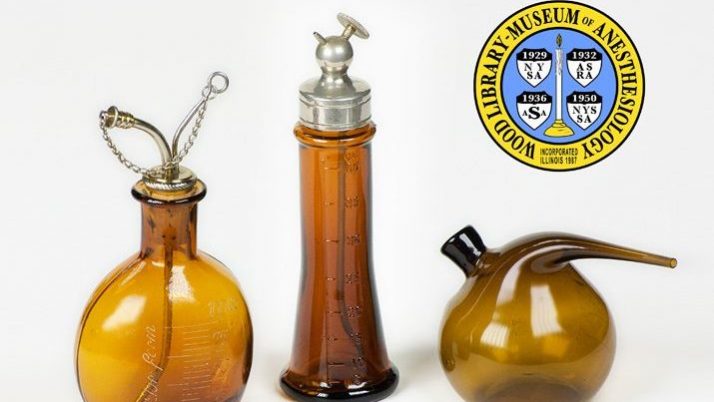Chloroform Drop Bottles
(Updated February 21, 2022)
In my recent post on Sarah J Sams, you saw restored photographs of her and her husband, Dr. R Randolph Sams. Large reprints are hanging in the Dataw Island History & Learning Center through the generosity of Teresa (Winters) Bridges. Sarah’s original image (i.e., ambrotype) holding their daughter Phoebe was taken in about 1858 when Sarah was in her early 20s. Randolph’s image (i.e., daguerreotype) shows a handsome young man upon graduation from college in 1849, also in his early 20s. What’s most interesting about Dr. R. Randolph Sams is his role in the earliest days of modern dentistry.
He volunteered to be the subject of an experiment for a new, unproven method for rendering a person unconscious in a controlled fashion!
Robert Randolph Sams (1827 – 1910)
Randolph is the ninth-born child of Dr. Berners Barnwell Sams, MD, and his first wife, Elizabeth Hann Fripp. He was born in 1827, most probably in the Beaufort home of his parents (at 310 New Street), where most of their children were born. Though from a large family, his life was unique in several ways. Randolph was one of the few SAMS who returned to Beaufort after the Civil War. He was the only man of his generation (i.e., grandsons of William and Elizabeth Sams) to return to Beaufort after the war and try planting on Datha again, not cotton but radishes, snap beans, green onions, and Irish potatoes. Unfortunately, he could not find buyers for his produce and gave up in 1872 [Rowland]. Of the 55 SAMS extended family members born before the war and still alive afterward, few returned to Beaufort. Those that did return included Dr. R. Randolph, his wife Sarah Jane Graham (Sams) Sams with their two children, his brother Dr. Melvin Melius with his wife Eliza with their three children, their single brother Franklin Fripp, and their single sister Elizabeth Exima Sams.
Starting a Family
Sarah Jane Graham Sams (1835 – 1920) married Dr.Sarah Sams to her husband, Dr. Robert Randolph Sams (1827 – 1910), her first cousin once removed (1C1R), in 1853. They had five children, though only three survived into adulthood. Their first child, Mary Randoph “Mamie” Sams (1854 – 1920), was born in 1854, never married, and lived her whole life, except during the Civil War, in Beaufort. By 1900, she was blind; I don’t know why or how this happened. She is buried in the Old Saint Helena Churchyard, as is nearly everyone in this family. Randolph and Sarah’s second and third children both died young. Berners Barnwell Sams was born in 1855, and daughter Elizabeth Reeve Sams was born a year later, in 1856. Unfortunately, neither child appears in the 1860 Federal Census records. Like Mary, their other daughter Sarah Phoebe Caroline Sams (1858 – 1901), was also with their mother in Barnwell Court House, South Carolina, during the war. Once Sarah and Randolph return to Beaufort after the war, they have their last child, Horace Reeve Sams (1869 – 1949).
S. Phoebe (Sams) Sams married her cousin Dr. Milledge Bonum Sams in 1885. They were both born and raised in Beaufort and spent their lives in Beaufort. However, H. Reeve Sams never marries and works for Kate Gleason later in life. She is the Rochester, NY industrialist who bought Datha Island in January 1928.
Now it’s time to get back to R. Randolph Sams and his trailblazing days as a student.
Baltimore College of Dental Surgery
R. Randolph Sams was educated at the first college in the world to offer a degree in Doctor of Dental Surgery. Baltimore College of Dental Surgery (now the University of Maryland School of Dentistry) was founded in 1840. It was the birthplace of the Doctor of Dental Surgery (D.D.S.) degree and is widely acknowledged as the first dental college in the world. R. Randolph Sams enrolled there in 1847 and graduated a year or two later. Dr. Chapin A. Harris was the school’s first dean, a practical dentistry professor, and the school’s second president, a position he held when Randolph was a student.
In the 1800s, great strides were being made to achieve a controlled, temporary loss of sensation or awareness for medical purposes. Doctors wanted to enable the painless performance of what would otherwise cause severe or intolerable pain to an unanesthetized patient. One area of need was dentistry. But ‘controlled’ and ‘temporary’ are the keys here. When Randolph started college, anesthetics had a nasty habit of being worse than the cure or dangerous to administer. In the 1840s, ether and chloroform were in a race to become the safer, preferred anesthetic. Ether lost because it often led to excessive vomiting and was highly flammable.
At age 20, R. Randolph Sams volunteered to be the subject of an experiment. The person experimenting on him in 1847 was Dr. Harris, the college president. It is widely reported that Scottish physician Sir James Young Simpson first used the sweet-smelling, colorless, non-flammable liquid as an anesthetic, that same year! In Baltimore, Randolph was the subject of two attempts to use chloroform as an anesthetic on a dental patient. Therefore he may have been the first or second person in history so ‘honored.’
Dental COSMOS 1901
Dr. W. G. FOSTER, Baltimore, Md., read the following paper: “… Now, what I wish especially to call your attention to is the fact that in the same year and near the same time (so far as I can ascertain) that Sir James Simpson announced the anesthetic properties of chloroform it was being experimented within this city. In the year 1847 Robert Randolph Sams, of South Carolina, then a student of the Baltimore College of Dental Surgery, volunteered to place himself at the disposal of the faculty of said college to test the properties of the newly discovered chloroform. I have been in correspondence with Dr. Sams, and will read you a copy of his letter to me in response to one I had written him upon the subject.”
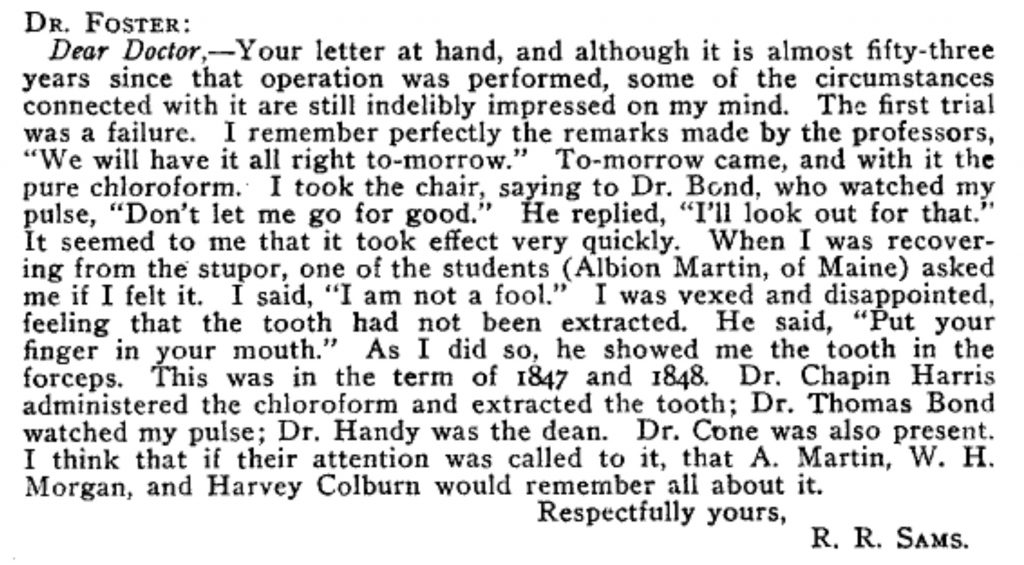
Chloroform’s use spread quickly entering the 1850s, which led directly to the need for a dedicated person whose sole job was to administer chloroform to the patient. Physicians found it dangerous to administer any anesthetic while distracted by the surgical procedure itself. The first fatality directly attributed to chloroform administration was recorded on 28 January 1848, just months after Randolph’s successful experience. Unfortunately, it was the first of many deaths. Surgeons began to appreciate the need for a trained anesthetist. As the Civil War started, nurses met this need.
First, on the left below is the student and patient. Second, on the right is the teacher and dentist.
Mr. Sams’ tooth was extracted by Dr. Harris, aided by chloroform, in 1847.
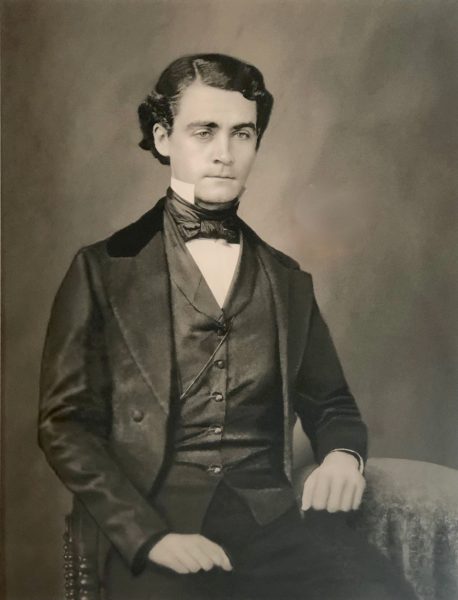
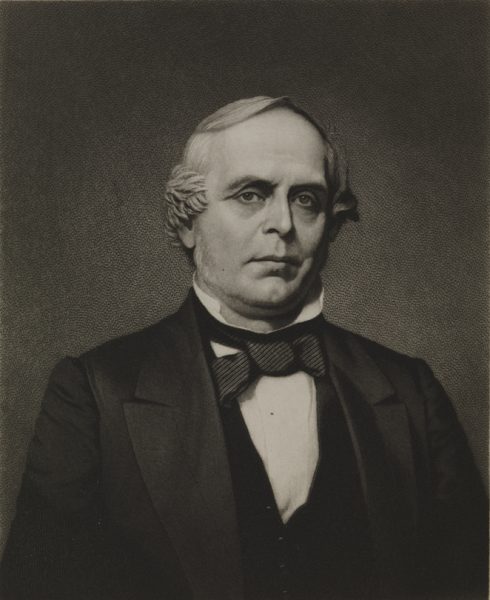
Rest of the Story
After graduating circa 1849, Dr. R. Randolph Sams returned to Beaufort and managed his Bluff Plantation (i.e., “Hard Scrabble”) on Lady’s Island, which his father gave him. In parallel, he advertised his dental services in the local paper. Once the war started, Dr. RR Sams served in the Confederate South Carolina Troops, 11th Regiment, South Carolina Infantry (9th Volunteers), Company A (Beaufort Volunteer Artillery).
After the war, Randolph resettled his family in Beaufort. The Federal Government had confiscated his plantation, and times were difficult for several years. His sister Elizabeth Exima Sams also lived in Beaufort and told others, “Uncle Randolph said that he and his family lived on potatoe[sic] peelings. And so it went.”
In the 1870 & 1880 Federal Censuses, he gives his occupation as ‘dentist.’ Later in life, he gives his trade as ‘planter.’ When his sister Elizabeth died in 1906, Dr. R. Randolph Sams became the last of his generation in Beaufort; the last grandchild of William and Elizabeth Sams in town. He seems to have done well in his later years. Dr. R. Randolph Sams was commissioned as the Beaufort County Coroner in 1908 and was still serving in that position when he died on November 24, 1910. Sarah outlived him by about ten years.
Dr. Robert Randolph Sams and his wife Sarah Jane Graham Sams are buried in Saint Helena’s Episcopal Churchyard, Beaufort, SC.
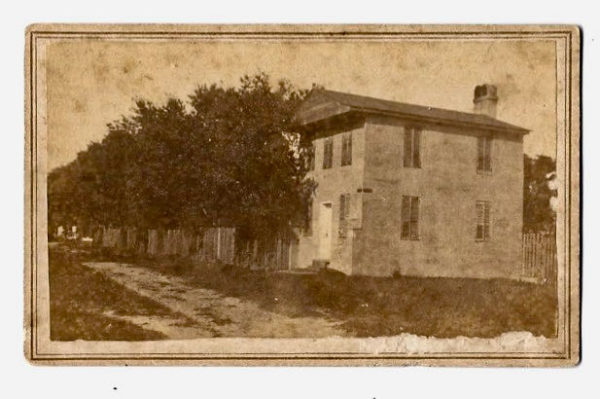
Images of Sarah Jane Graham (Sams) Sams & Dr. R. Randolph Sams taken late in life.
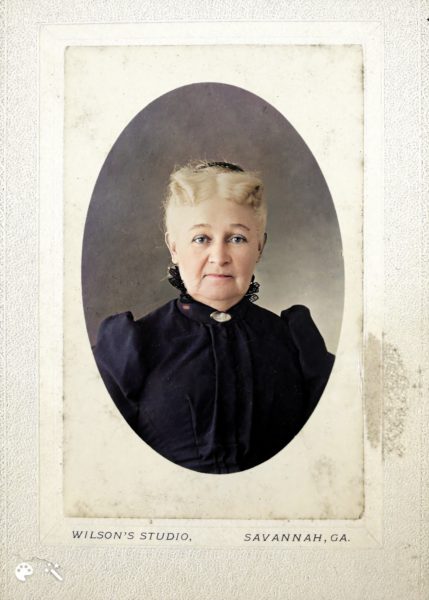
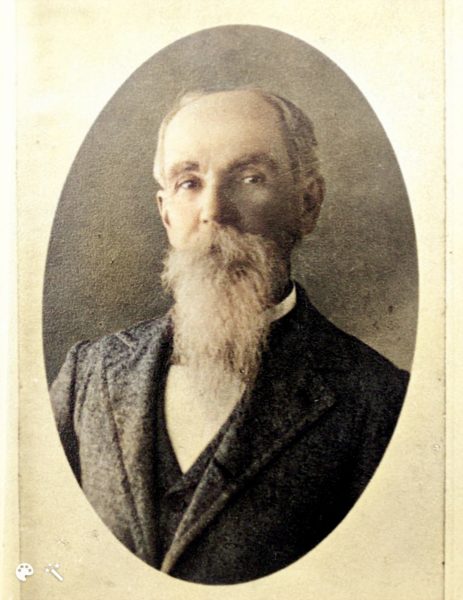
Sources
Foster, Dr. W. G. – Administration of Nitrous Oxides by the Hunter System, The Dental Cosmos; a monthly record of dental science: Vol. XLIII. [Vol. 43] / 1901, Volume: 43, Issue: 11, Union Meeting of the District of Columbia Dental Society and the Maryland State Dental Association, November 1901, pp. 1306-1320
Holden, Joel and Riski, Bill – The Sams Family Tree, Ancestry.com, accessed 19 Jul 2020.
Rowland, Lawrence S. and Wise, Stephen R. – The History of Beaufort County, South Carolina, Volume 3, Bridging the Sea Islands’ Past and Present,1893 – 2006. 2015, page 39.
Wikipedia – Subjects: Chapin A. Harris, University of Maryland School of Dentistry, Anesthesia, accessed 19 Jul 2020.
Wood Library-Museum of Anesthesiology (WLM), Schaumburg, IL, accessed 19 Jul 2020.
#52Sams Week 29 – Trailblazer Dr. Robert Randolph Sams, D.D.S. (1827 – 1910)


